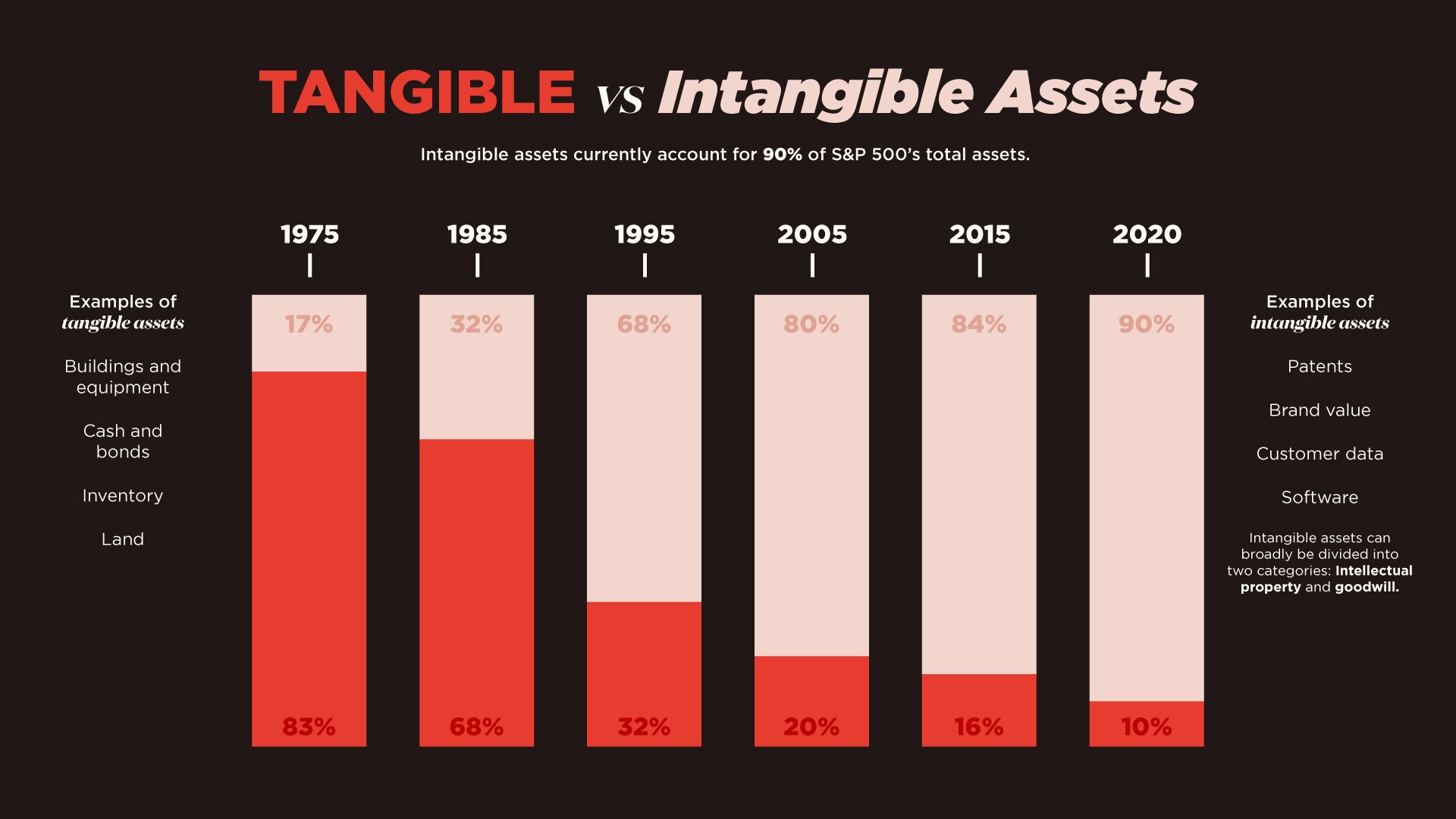Brand as an Intangible Asset: Investing in Invisible Value
Intangible assets account for 90% of the S&P 500’s total assets. This means that branding is more important than ever.
A shift in the past couple of decades has put intangible assets at the top of company value.
You might be wondering:
What are tangible and intangible assets?
Tangible assets are the things you can touch or measure– cash, vehicles, inventory, furniture, buildings, etc. It’s relatively easy to calculate the value of tangible assets, and they can be included in a company's financial value.
For example, if a company makes $500k in profit but has another $500k in tangible assets, the economic value in their financial statements now sits at $1 million.
Intangible assets are a bit more complicated. They don’t have any physical embodiment. Often, their financial value is difficult, if not impossible, to quantify. Knowledge, computerized data, and internal culture are all forms of intangible assets.
While intangible assets have always been important, they have gone from 17% of total assets to 90% in just 45 years. This shift is due to technological advances that make the physical less important than the ideological. As a result, we are entering an era of “capitalism without capital,” where knowledge and digital economies are taking precedence over the financial economy for the first time.
What does this mean for the economy, and more specifically, your company?
There are two types of intangible assets, and to be successful in this economy, you need to be investing in both.
Identifiable intangible assets include patents, copyrights, domain names, data, etc. These can be sold and separated from a business. Investing in identifiable intangible assets makes it easier to secure future cash flow and financing. These are imperative to the longevity of a business.
However, just as important but less discussed are the unidentifiable intangible assets, which cannot be separated from a business but provide indisputable value. Brand recognition, reputation, client relationships, and knowledgeable employees are forms of unidentifiable intangible assets– they are not quantifiable but are deeply meaningful investments.
Intangible assets are the bedrock of most companies' value. If you’ve built a business where no one can create but you or no one can serve clients but you, you’ve created a job, not a company.
Branding is an unidentifiable intangible asset worth investing in.
Having a brand that resonates with your consumers and bridges the gap between exploration and purchase intention is a valuable investment. Branding can significantly contribute to a company’s intangible asset growth through multiple pathways.
Hoot is a culture-focused branding agency, and we can help you build your intangible assets by:
locating and honing your Employer Brand and Employer Value Proposition (EVP),
providing a comprehensive brand strategy that represents company values, mission, and target audience,
crafting memorable visuals and language that can elevate brand identity and voice,
identifying and leveraging a company’s unique selling point (USP) to differentiate itself within the marketplace,
building high-quality campaigns and materials that increase consumer trust and maintain a positive brand reputation, and
evolving the brand to ensure it becomes an intangible asset over time.
We are rooting for the success of your company, and intangible asset work is what we do best. Let us guide you through the process of growing your company’s value. Read more about our Brand Being Methodology and schedule a consultation today.


